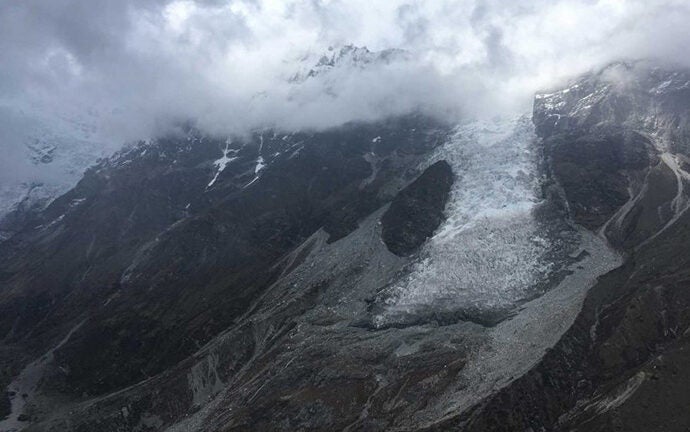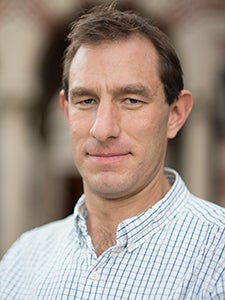
Fool’s gold in glaciers is a sign of increased carbon
Some say the world will end in fire, some in ice. One more reason to hold with those who favor fire: USC scientists have found that rock and soil breakdown in glaciers generates more acidity and releases more carbon than other forms of natural weathering, according to a new study.
Perhaps most interesting, researchers say, it is the elevated oxidation of pyrite, popularly known as “fool’s gold,” in the glacial breakdown that produces increased acidity and leads to CO2 escaping to the atmosphere from rivers and the oceans.
“CO2 has gone up and down repeatedly over time, and we don’t really know why. Our study suggests that this process may play a meaningful role,” said Joshua West, professor of Earth sciences and environmental studies at USC Dornsife and the study’s corresponding author.
This means that, over very long Earth cycles, nature is self-regulating against future runaway glaciation.
Graduate researcher Mark Torres of USC Dornsife’s Department of Earth Sciences served as the study’s lead author, which published on July 31 in the Proceedings of the National Academy of Science.
The fool’s gold standard
As oxidized pyrite slowly makes its way from glaciated water to the ocean, it creates an increase in CO2 in the atmosphere.

Joshua West, professor of Earth sciences and environmental studies at USC Dornsife. Photo by Peter Zhaoyu Zhou.
“We found glacial rivers are rich in dissolved sulfur, and when they’re rich in sulfur, we have found that this tends to be because of the weathering of pyrite, or fool’s gold,” Torres said. “When these kinds of rivers flow into the ocean, the sulfur causes the transfer of carbon that was previously stored in rocks and the ocean back into the atmosphere.”
To measure the amount of carbon released by glacial weathering, Torres, West and the rest of the team analyzed a large database of 7,700 river glacier drainage samples.
The database was made up of a variety of samples collected from all over the world: Argentina, Canada, Greenland, Nepal, Iceland and the United States, among others. Included in the database were earlier field samples that had been collected by West and study co-author Jens Hartmann of the University of Hamburg.
The glacial river samples consistently demonstrated a lower alkalinity-to-carbon ratio than other river samples, which is indicative of pyrite weathering and carbon dioxide release.
A long time getting to Goldilocks
Earth’s slow geologic cycles have acted as a sort of balanced climate control, releasing and absorbing atmospheric carbon dioxide that helps keep our perfect little Goldilocks planet not too hot and not too cold in supporting the life currently on it.
However, there may have been at least one period in the planet’s history hundreds of millions of years ago when it tilted more closely to “Frozen’s” Queen Elsa than Goldilocks: a period when the Earth was nearly completely frozen, called “Snowball Earth.”
During this time, the atmosphere contained much less oxygen, which is required to weather pyrite. Less oxygen would potentially limit the amount of carbon released by glaciers.
“There were extensive glaciations with ‘Snowball Earth.’ And the evidence suggests that there was little oxygen in the atmosphere at this time, which is maybe why there was no apparent limit on the amount of glacial cover,” Torres said.
In the last few hundreds of thousands of years, though, there has been substantial change between glacial periods — including the Earth’s last ice age, which was just over 11,000 years ago — and our own warmer, interglacial ones. The team believes that the oxidation of glacial pyrite may hold one of the keys to understanding the rise and fall of CO2 during these relatively shorter cycles, as well.
That, in turn, could offer additional insights into how our planet has continued to support life for billions of years, and how other planets somewhere out there might hold the same possibility, even deep into the future.
“The types of carbon cycle feedbacks we discuss in our paper operate really slowly, but they can give us insight into the features we might look for in other planets that might be habitable,” Torres said.
Nils Moosdorf of the Leibniz Center for Tropical Marine Research and Jess Adkins of Caltech were also study co-authors. The research was supported by USC Dornsife and a grant from the National Science Foundation (EAR-1455352).